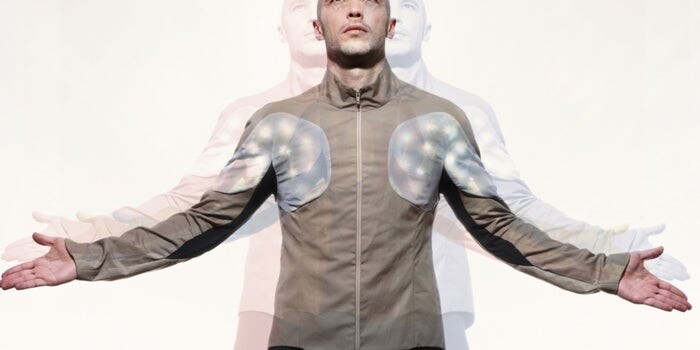The fashion industry is undergoing a revolutionary transformation as technology integrates seamlessly into clothing. By 2025, smart clothing will no longer be a niche concept but a mainstream trend, blending style, functionality, and innovation. From temperature-regulating fabrics to fitness-tracking apparel, tech-infused fashion is set to redefine how we dress and interact with our wardrobes. In this article, we’ll explore the top smart clothing trends to watch in 2025 and how they’re shaping the future of fashion.
What is Smart Clothing?
Smart clothing refers to garments embedded with technology that enhances functionality, comfort, and performance. These innovations range from wearable sensors to adaptive fabrics, offering benefits like health monitoring, climate control, and even connectivity.
Top Tech-Infused Fashion Trends for 2025
1. Temperature-Regulating Fabrics
One of the most exciting advancements in smart clothing is the development of fabrics that adapt to your body temperature. These materials use advanced fibers and coatings to keep you cool in the summer and warm in the winter.
- Examples: Jackets with built-in heating elements, breathable workout gear, and self-cooling fabrics for hot climates.
2. Wearable Fitness Trackers in Clothing
Fitness tracking is moving beyond wristbands and smartwatches. In 2025, expect to see clothing with embedded sensors that monitor heart rate, calories burned, and even posture.
- Examples: Sports bras with heart rate monitors, leggings that track muscle activity, and socks that analyze your gait.
3. Self-Cleaning and Odor-Resistant Fabrics
Say goodbye to frequent laundry days! Smart fabrics with antimicrobial and self-cleaning properties are becoming increasingly popular. These materials use nanotechnology to repel dirt and odors, keeping your clothes fresh for longer.
- Examples: Shirts that resist sweat stains, socks that stay odor-free, and jackets that repel water and dirt.
4. Solar-Powered Clothing
Solar-powered clothing is set to make waves in 2025, offering a sustainable way to charge your devices on the go. These garments are embedded with flexible solar panels that harness sunlight to power your smartphone or wearable tech.
- Examples: Backpacks with solar panels, jackets with built-in charging ports, and hats that power small devices.
5. Adaptive and Shape-Shifting Clothing
Imagine clothing that adjusts to your body shape or changes its appearance based on your preferences. Adaptive clothing uses smart materials and sensors to provide a perfect fit and customizable styles.
- Examples: Dresses that tighten or loosen based on your movements, shoes that adapt to your foot shape, and jackets that change color with a tap on your smartphone.
6. Health Monitoring Apparel
Smart clothing is becoming a powerful tool for health monitoring, offering real-time data on vital signs and overall wellness. These garments are particularly beneficial for athletes, patients, and seniors.
- Examples: Shirts that monitor blood pressure, socks that detect swelling, and gloves that track hand tremors.
7. Interactive and Connected Clothing
The Internet of Things (IoT) is making its way into fashion, with clothing that connects to your smartphone or other devices. These garments can send notifications, play music, or even light up.
- Examples: Jackets with LED displays, hoodies that sync with your playlist, and bags that alert you when you’ve left something behind.
8. Eco-Friendly Smart Fabrics
Sustainability is a key focus in the fashion industry, and smart clothing is no exception. In 2025, expect to see more eco-friendly fabrics that combine technology with sustainability.
- Examples: Biodegradable sensors, recycled materials with embedded tech, and fabrics made from renewable resources.
9. Augmented Reality (AR) Fashion
Augmented reality is transforming how we shop for and experience clothing. AR-enabled smart clothing allows you to visualize how an outfit will look on you before making a purchase.
- Examples: Virtual fitting rooms, AR-enabled shopping apps, and clothing that interacts with AR filters.
10. Safety-Enhanced Clothing
Smart clothing is also being designed with safety in mind, offering features like built-in GPS, emergency alerts, and visibility enhancements.
- Examples: Jackets with LED lights for nighttime visibility, shoes with GPS tracking for hikers, and vests that send distress signals in emergencies.
Why Smart Clothing is the Future
- Enhanced Functionality: Smart clothing offers practical benefits like health monitoring, climate control, and connectivity, making everyday life easier and more efficient.
- Sustainability: Many smart fabrics are designed with eco-friendly materials and processes, aligning with the growing demand for sustainable fashion.
- Personalization: Adaptive and customizable features allow users to tailor their clothing to their preferences and needs.
- Innovation: The integration of technology into fashion opens up endless possibilities for creativity and innovation.
Top Brands Leading the Smart Clothing Revolution
- Ralph Lauren: Known for its PoloTech shirts that monitor fitness metrics.
- Levi’s: Collaborating with Google to create smart denim with touch-sensitive fabric.
- Under Armour: Offers a range of fitness-tracking apparel, including shoes and sports bras.
- Nadi X: Specializes in yoga pants with built-in vibration technology to guide your practice.
- Wearable X: Creates interactive clothing like the Nadi X yoga pants and connected socks.
Conclusion
The rise of smart clothing is revolutionizing the fashion industry, offering a perfect blend of style, functionality, and innovation. By 2025, tech-infused fashion will be a staple in wardrobes worldwide, providing solutions for health, sustainability, and personalization. Whether you’re an athlete, a tech enthusiast, or simply someone who values comfort and convenience, smart clothing has something to offer.


